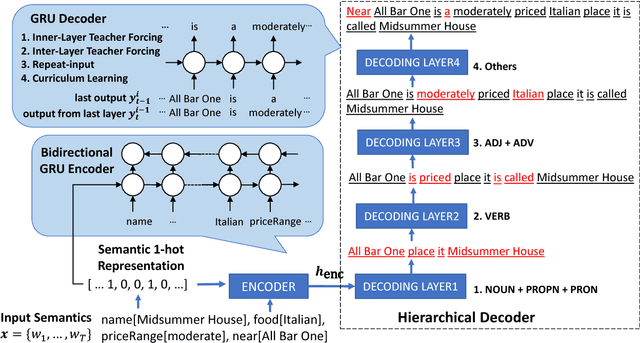Natural Language Generation by Hierarchical Decoding with Linguistic Patterns
Paper and Code
Aug 09, 2018

Natural language generation (NLG) is a critical component in spoken dialogue systems. Classic NLG can be divided into two phases: (1) sentence planning: deciding on the overall sentence structure, (2) surface realization: determining specific word forms and flattening the sentence structure into a string. Many simple NLG models are based on recurrent neural networks (RNN) and sequence-to-sequence (seq2seq) model, which basically contains an encoder-decoder structure; these NLG models generate sentences from scratch by jointly optimizing sentence planning and surface realization using a simple cross entropy loss training criterion. However, the simple encoder-decoder architecture usually suffers from generating complex and long sentences, because the decoder has to learn all grammar and diction knowledge. This paper introduces a hierarchical decoding NLG model based on linguistic patterns in different levels, and shows that the proposed method outperforms the traditional one with a smaller model size. Furthermore, the design of the hierarchical decoding is flexible and easily-extensible in various NLG systems.
 Add to Chrome
Add to Chrome Add to Firefox
Add to Firefox Add to Edge
Add to Edge